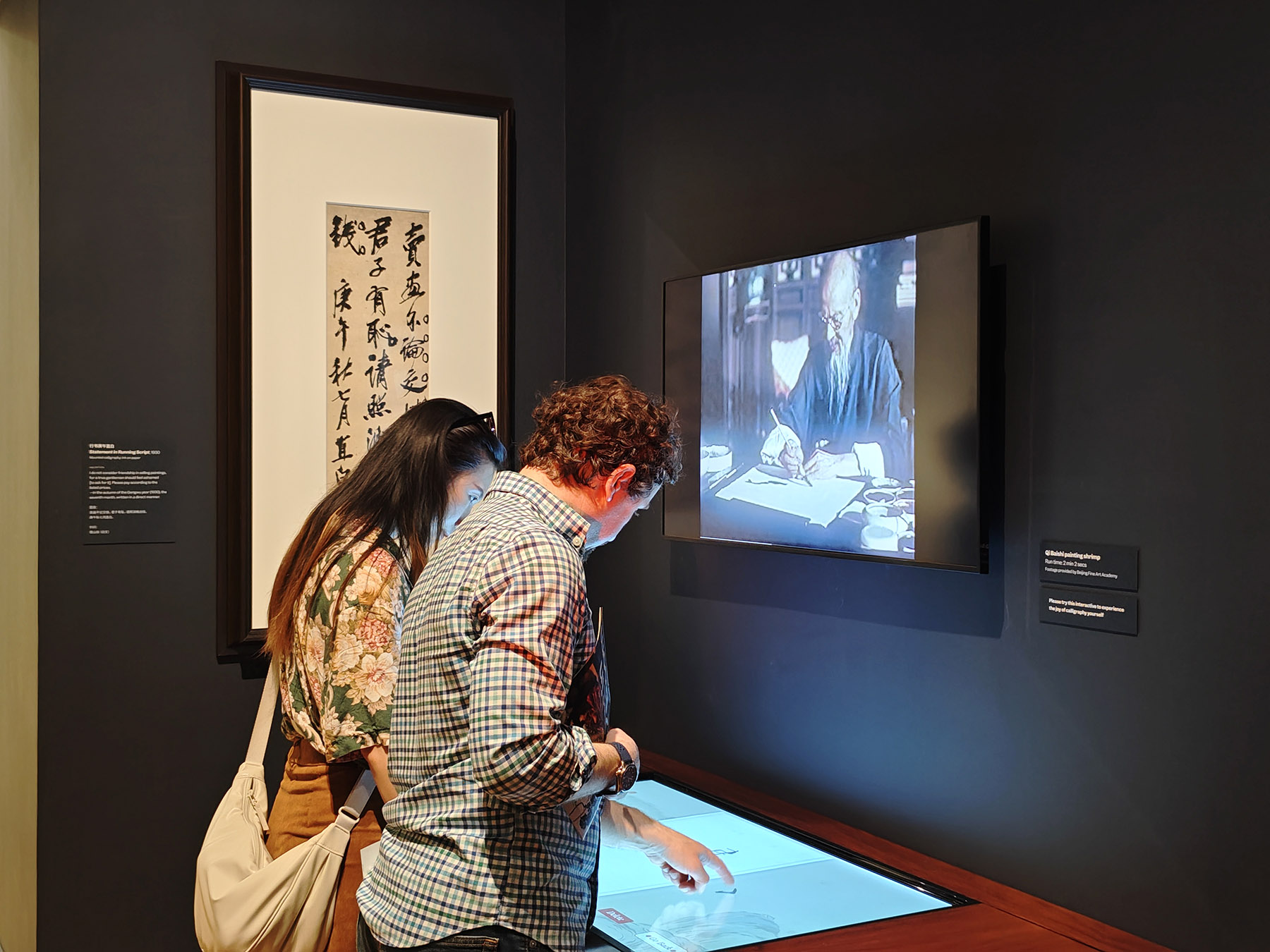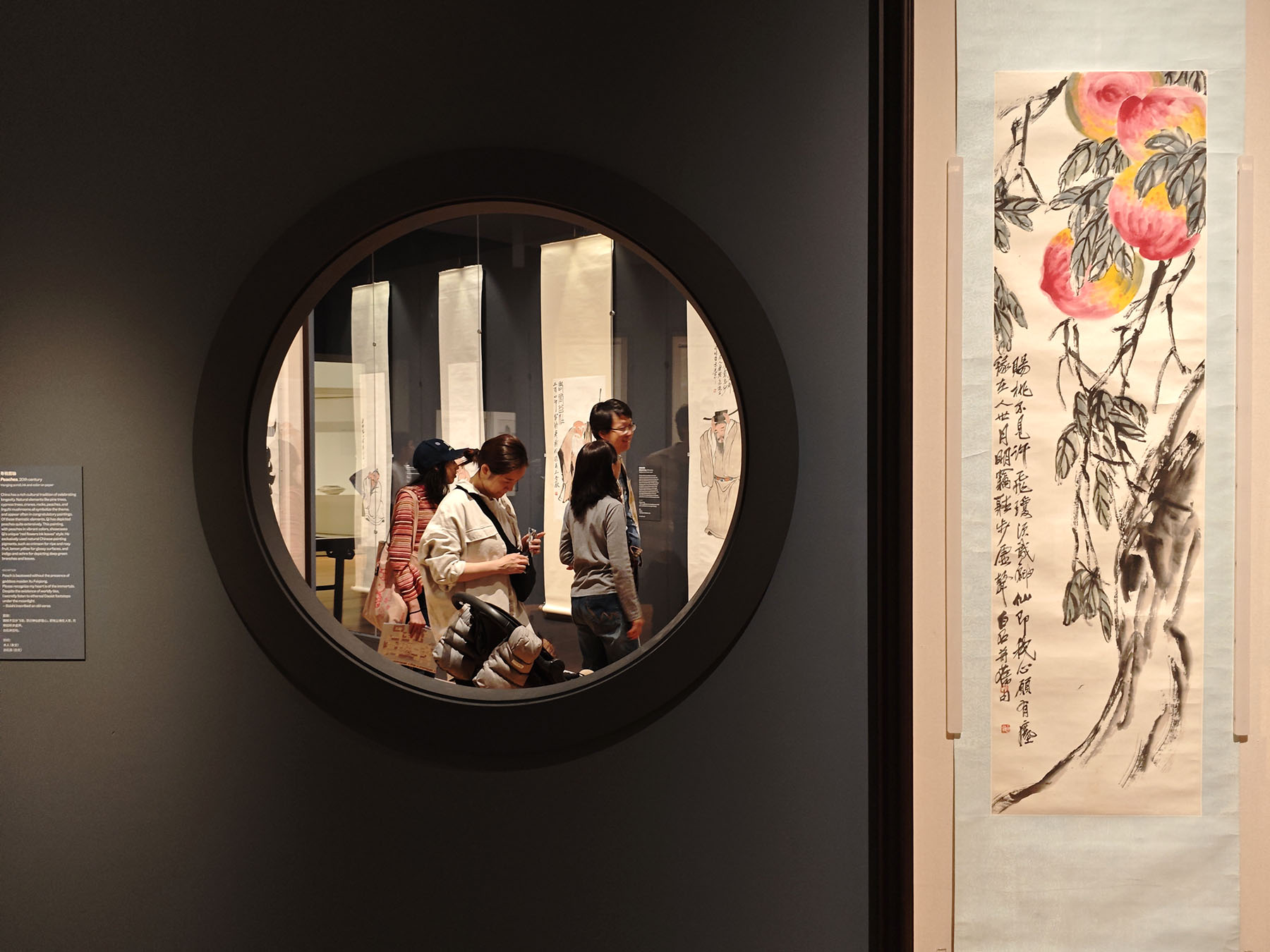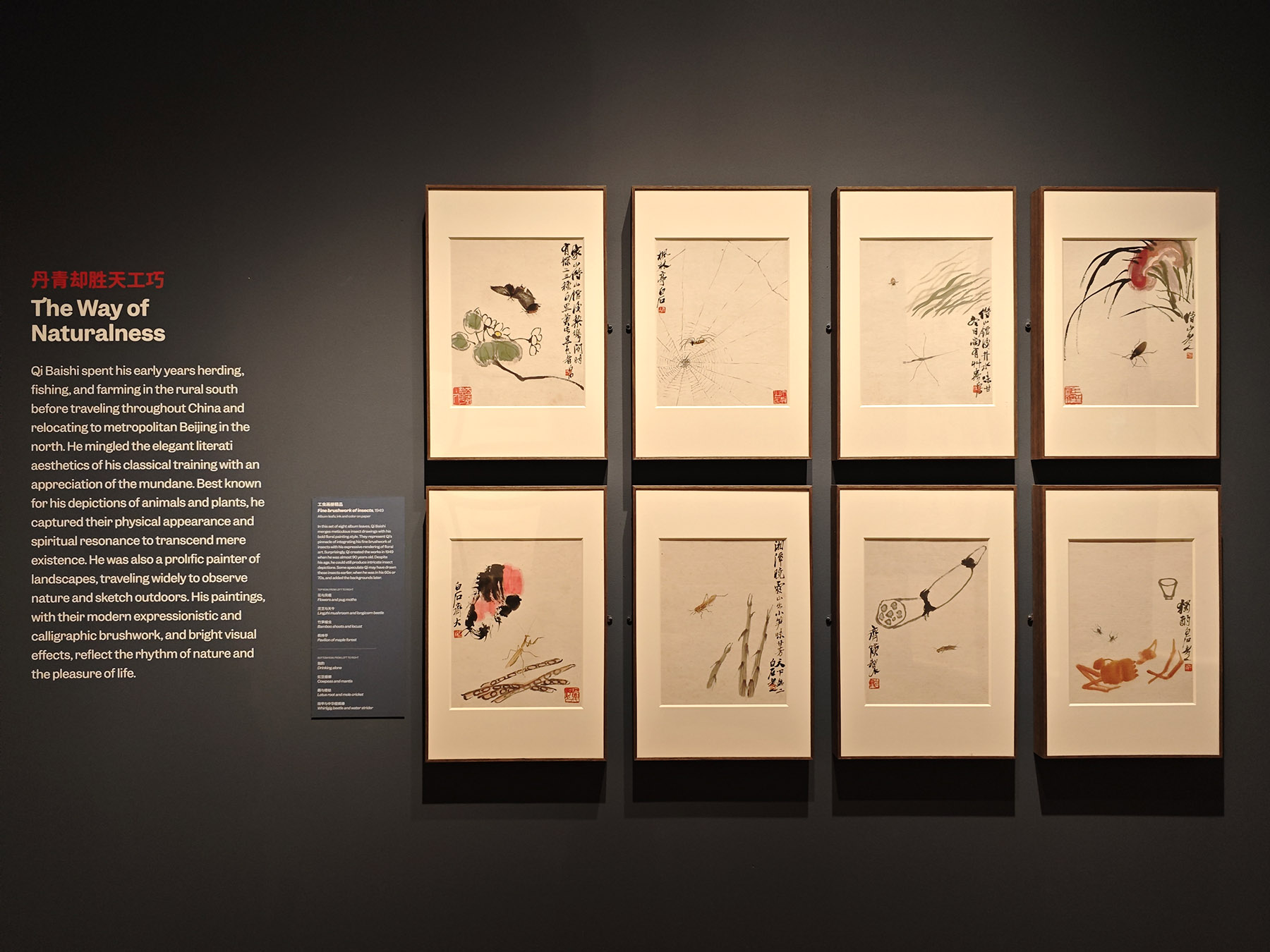Artist's works animate his illuminating perspectives on what many would consider to be mundane, Lin Qi reports.

A blooming, lively garden at his villa in Giverny, France, inspired Claude Monet to create his iconic Water Lilies series. So it was with Chinese modern ink artist Qi Baishi (1864-1957) who cultivated plants and raised small animals in his hutong, or alleyway, courtyard in Beijing.
The prosperous yet small garden not only eased homesickness when he reminisced of his earlier life in the countryside of his hometown Xiangtan, Hunan province. It also allowed him to carry out shrewd observations of the flowers, leaves, branches and insects — he would later visualize and reanimate these living creatures using paintbrushes. His vivid depictions of this natural, mundane world have remained his most popular works.
His blooming garden and pool, together with nature's creatures, are visiting the United States at the Museum of Fine Arts, Boston, Massachusetts, to amuse viewers. The exhibition Qi Baishi: Inspiration in Ink displays the breadth of his artistic vision and the scope of his rich life until Sept 28.
READ MORE: The ink painter who drew inspiration from the resilience of life
The exhibition was previously held at the Asian Art Museum in San Francisco before traveling to Boston. It primarily displays collections from the Beijing Fine Art Academy, where Qi served as its first honorary president, and to which Qi, his family and friends have donated many artworks and documents for public viewing and research.
The tour, which began last year in memory of the 160th anniversary of Qi's birth, continues the Beijing Fine Art Academy's efforts to raise Qi's profile and cultural influence with a series of exhibitions and exchange events.

Wu Hongliang, director of the Beijing Fine Art Academy, said at the time that by doing so, the academy is seeking collaborations with overseas museums that also have Qi's art in their collections.
Wu says this wish has been realized at the Boston exhibition at MFA, which houses a rich collection of Chinese art including Qi's paintings. This time, Browsing by Candlelight, an ink and color work on paper donated to the museum by Fan Tchun-pi, or Fang Junbi (1898-1986), a 20th-century female painter, has rejoined Qi's works from Beijing.
According to a note Qi left on the painting, he created Browsing by Candlelight after returning home one night and seeing two mice on an open book under candlelight. He also wrote, "Men are asleep, while you are awake."
Qi painted scenes that he found interesting and thought-provoking in daily life that others might find common and overlook — or, like the mouse incident, would scream and jump away.
Before he became dedicated to painting, Qi made a living from carpentry, which often required him to carve relief patterns, requiring attention to detail. This skill was also visible when he utilized the gongbi style — a method of Chinese brushwork that delimits subjects with accuracy — to reanimate insects and paint wings with lively, detailed presentation.

Qi was also well-versed in the xieyi style — another method of Chinese brushwork marked by loose, semiabstract strokes and carefree expanses of layered colors.
While he could be elaborately detailed, Wu says Qi also experimented with fewer strokes in the xieyi style.
"For example, when he painted a fish, he first drew five to six strokes in monochromatic ink. He reduced one stroke, and then another. Then he completed the fish with only three lines and added some lotuses."
Qi's balanced integration of gongbi and xieyi to portray plants and small animals in a single painting transmits a vigorous yet serene mood. His works delight audiences of various backgrounds and aesthetic preferences.
Qi also injected his life perspectives while defining his subjects and performing the shading. He created two titles for his plant and insect pieces. One is Caojian Touhuo (to eke out a living in grass) which summarizes the lives of small animals. It is also a metaphor for which he once described how one coming from a humble home, like himself, should make a living with care and cautiousness.

The other, Kexi Wusheng (it's a pity they are mute) is a metaphor for which Qi believed that the creatures under his strokes, although they couldn't breathe or make sounds, were as lively as those in the real world.
"Qi was one of the most influential and creative artists of 20th-century China," Wu says.
"The Beijing Fine Art Academy has assembled over 2,000 of Qi's works and manuscripts, and is committed to the long-term research and promotion of his art and Chinese ink tradition."
ALSO READ: Modern master Qi celebrated in Europe
Wu says the exhibition also shows Qi's figure paintings in which his creations of immortals and fairies celebrate the richness of the folk art and literature that nourished his childhood, and his landscape paintings show gracefulness interlaced with a tendency toward life's simple pleasures.
"His brushstrokes are minimalist and modernist, and imbued with the expressive spirit of Chinese calligraphy, by which he celebrated the vigor of all life," Wu says.
Contact the writer at linqi@chinadaily.com.cn


